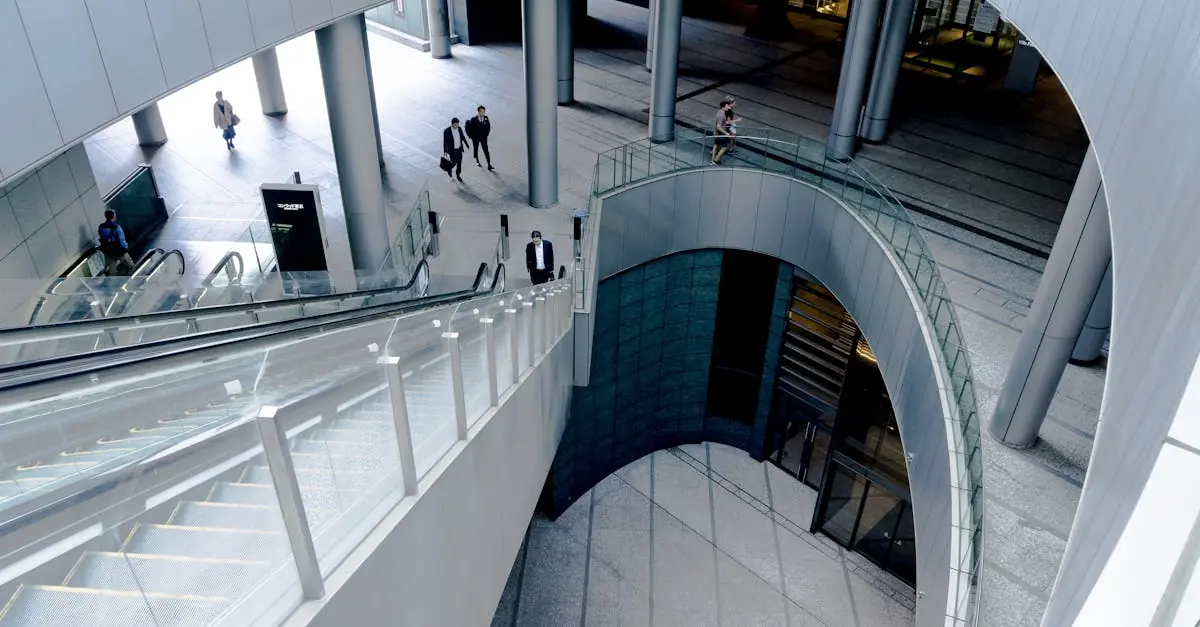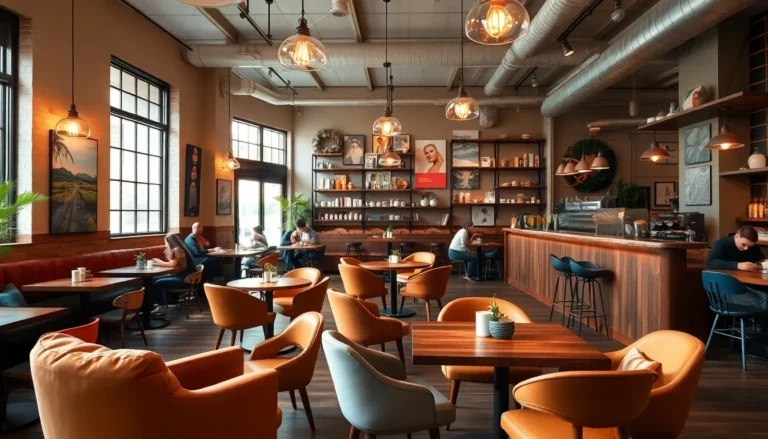Table of Contents
ToggleIn the bustling world of design and architecture, a layout flow plan is the unsung hero that keeps chaos at bay. Imagine trying to navigate a maze blindfolded—frustrating, right? That’s what it feels like to work without a solid plan. A well-crafted layout flow plan not only enhances functionality but also transforms spaces into harmonious environments where creativity can thrive.
Understanding Layout Flow Plan
A layout flow plan serves as a blueprint, guiding the arrangement of spaces within a design. This plan outlines how areas interact, ensuring efficiency and ease of movement.
Definition of Layout Flow Plan
A layout flow plan defines the spatial organization in design and architecture. It involves mapping out the arrangement of furniture, fixtures, and pathways. Designers use this plan to establish connections between different areas. Clarity on how each space functions contributes to operational efficiency. The flow plan often incorporates details like room sizes and purposes, highlighting the relationship between spaces.
Importance of Layout Flow Plan
The significance of a layout flow plan cannot be overstated. A well-crafted plan enhances functionality, promoting smooth transitions between areas. This organization not only improves navigation but also boosts the overall aesthetic appeal. Effective layout flow fosters collaboration and creativity, making environments more inviting. Poorly structured layouts can confuse users, leading to inefficiencies and frustration. Prioritizing a thoughtful layout flow plan leads to better experiences for occupants and visitors alike.
Key Components of a Layout Flow Plan
A layout flow plan consists of essential elements that contribute to a functional design. Understanding these components helps in creating organized, efficient spaces.
Space Allocation
Effective space allocation is crucial for maximizing the utility of an area. Designers determine specific dimensions for furniture, fixtures, and pathways to ensure optimal interaction. Allocating proper space fosters comfort and accessibility, benefiting user experience. Clear delineation between areas, such as workspaces and relaxation zones, enhances functionality while encouraging efficient movement throughout the space. Balancing the area distribution allows for different activities to coexist harmoniously.
Workflow Analysis
Workflow analysis focuses on how activities flow within a space. By identifying primary tasks, designers optimize layout to minimize disruptions. Mapping out the sequence of movements ensures that essential areas are easily accessible, reducing delays. Analyzing workflows leads to a better understanding of user needs and preferences, which informs design decisions. Prioritizing this analysis results in environments that support productivity and efficiency while promoting a seamless experience for occupants. Properly aligned workflows can significantly enhance both functionality and user satisfaction.
Benefits of Implementing a Layout Flow Plan
Implementing a layout flow plan presents numerous advantages that enhance the functionality and atmosphere of a space. Thoughtful design promotes efficiency and safety, ultimately benefiting users and visitors alike.
Improved Efficiency
Enhanced efficiency emerges from a well-organized layout flow plan. Users can navigate spaces effortlessly when pathways are clear and logically arranged. The arrangement helps minimize the time spent moving between areas, allowing for a more productive experience. Workspaces that are designed to reduce unnecessary steps contribute to higher productivity levels. By strategically placing resources, such as tools and supplies, in accessible locations, occupants can complete tasks swiftly. Both design and arrangement form a symbiotic relationship that leads to superior workflow and reduced congestion, ensuring that activities proceed smoothly.
Enhanced Safety Measures
Safety benefits significantly from a well-executed layout flow plan. Spaces that consider user movement can identify potential hazards and mitigate risks. Responsible design includes clear pathways that prevent accidents and injuries. When exits and emergency equipment are easy to access, occupants feel more secure. Creating visual cues, such as signage, aids in directing attention to safety features. Adequate spacing between furniture or fixtures contributes to a safer environment by enabling movement without obstructions. By prioritizing safety through effective layout design, organizations foster a protective atmosphere for everyone involved.
Common Mistakes to Avoid
When creating a layout flow plan, certain mistakes can disrupt functionality and efficiency. Identifying these errors promotes better outcomes.
Inadequate Space Utilization
Failure to utilize space effectively leads to wasted areas. Designers often overlook the specific needs of different activities, resulting in cramped or underused zones. A well-planned layout takes into account furniture size and arrangement, ensuring optimal use of every square foot. Ignoring spatial dimensions also hampers ease of movement, creating bottlenecks. Prioritizing versatility allows for multiple uses of spaces, enhancing overall utility. Adequate space should accommodate flow and functionality, ultimately benefiting occupants.
Neglecting Employee Input
Leaving out employee feedback negatively impacts workspace effectiveness. Engaging staff during the planning phase uncovers valuable insights regarding their needs and preferences. Ignoring these perspectives can lead to frustration and diminished productivity. Employees often hold key knowledge about workflow, so their input shapes an environment that supports efficiency. Incorporating their suggestions fosters a sense of ownership and satisfaction. Emphasizing communication channels ensures alignment between design goals and user expectations.
A well-executed layout flow plan is vital for creating spaces that are not only functional but also inviting. By focusing on effective space allocation and workflow analysis, designers can enhance user experiences and promote productivity. Recognizing the importance of user input during the planning process is crucial for achieving a design that meets the needs of all occupants.
Ultimately, investing time and effort into developing a thoughtful layout flow plan leads to environments that are safe, efficient, and aesthetically pleasing. This strategic approach transforms spaces into harmonious settings that foster creativity and collaboration, ensuring that every square foot is utilized to its fullest potential.




